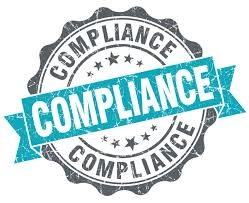HRKatha speaks to John Arendes, VP & GM – Global Compliance Solutions, Skillsoft to find out how companies that consider investment in compliance culture as unnecessary and unprofitable fail to realise its benefits or reap the same at a later stage.
Organisations often stress on the need for compliance and see it as a regulatory affair. In doing so, they fail to evaluate the benefits that come with it.
Some companies view the creation of a compliance culture as an expense that does not produce enough return on investment. This perception may be created when companies spend large sums of money on poorly-planned compliance programmes that produce disappointing results.
What companies need to believe, accept and practise is the integration of compliance as a key component of their culture. Not only does this result in a higher satisfaction level for employees, but should also result in improved productivity and employee retention. Eventually, there is an increase in reputation and brand perception, which results in better economic performance in the marketplace. In addition, as safety records improve, it reduces both cost and risk.
“Organisations fail to embrace an ethical and compliant culture, it can damage an organisation and result in financial and life-changing consequences for individuals within the company. Over-programming of compliance also deprives the organisations of the benefits of an ethical, people-centric culture,” says John Arendes, VP & GM – Global Compliance Solutions, Skillsoft.
Know the six elements of an effective compliance training program and try Percipio compliance to make compliance learning enjoyable and engaging.
Compliance issues may result in the loss of lucrative government and third-party contracts that have stringent compliance requirements.
“If a violation does occur, organisations that have consistently demonstrated strong compliance cultures may be treated more favourably in court. The Department of Justice declined to prosecute a major bank because of its effective, pre-existing compliance programme,” he quips.
However, as companies start realising the benefits of compliance, the big question raised is how to integrate the same into the company culture.

Organisations fail to embrace an ethical and compliant culture, it can damage an organisation and result in financial and life-changing consequences for individuals within the company. Over-programming of compliance also deprives the organisations of the benefits of an ethical, people-centric culture.
Once a company has a mindset to embark upon a compliance journey, it helps to have a road map to ensure a clearly-defined route to the destination.
The Skillsoft Compliance Maturity Model™ provides a framework for organisations to follow.
There are five stages in the journey to achieve a fully mature compliance culture:
• Stage 1: Awareness of compliance requirements
• Stage 2: ‘Check-the-box’ to meet minimal requirements
• Stage 3: Top-down behavioural change
• Stage 4: Self-driven behavioural change
• Stage 5: Full integration of compliance and business strategy
Now, once organisations have stepped in to embark on the compliance journey, here are the five things that it should do:
Get leadership buy-inYour compliance journey must start with commitment from the leadership team in order to achieve behaviour change. Executives need to define and own the risk management process.
Identify Risks Risks to the organisation should be identified and prioritised. High-risk issues will require the greatest commitment to training and to achieve behavioural change. Low-risk issues should receive minimal attention.
Align Risks to Business GoalsOnce the risks have been prioritised, they should be aligned to support key business goals and incorporated into the strategic plan for the organisation. Key goals may include revenue growth, expense reduction, risk reduction, and employee safety.
With the compliance strategy in hand, a training programme should be planned to train the right people, on the appropriate subjects, in the right way. The learnings from the training should be embedded in the daily routine of employees and practised on the job.
Be Strategic with TrainingTraining courses should be designed to appeal to the mind as well as the heart. Many compliance training programmes overlook the emotional aspect of training. Emotional training messages help team members feel that the company is looking out for the safety and well-being of the employees, their co-workers, and even their families and loved ones. By instilling pride in working for an ethical company, employees will stay longer and work harder to support company goals. People enjoy feeling that they are a part of something good and bigger than themselves. Help employees understand that bad behaviour may have dire consequences.
Be RelevantYour compliance training programme needs to target the right job roles for each training format. Nothing will turn employees off faster than wasting time taking a training course that is of no help to them in their roles.
Develop Metrics Meaningful metrics for the compliance programme should be established at the onset. Metrics should be aligned around the key company goals that the compliance programme has been designed to support. The compliance programme should be implemented in such a way that data for the metrics can be easily collected and reported. Targets for the metrics should be realistic and achievable. When targets are unachievable, people are not motivated to reach them.
The benefits of creating a compliance culture are clear, but some organisations find it difficult to overcome inertia and get on a path to improvement. A common mistake in planning compliance programmes is to spend too much time and money on training that does not support high-priority business goals. Compliance training for low-priority goals should be minimised.
Also, compliance-driven organisations should mandate learning officers to educate employees on corporate ethics and compliance policies.
A people-centric compliance culture can help organisations reach important goals, such as revenue growth, cost and risk reduction, and improved safety. To proactively manage compliance and help the organisation become ‘always audit ready’, compliance information, training, work management and tracking should all be integrated into the systems employees use every day.



